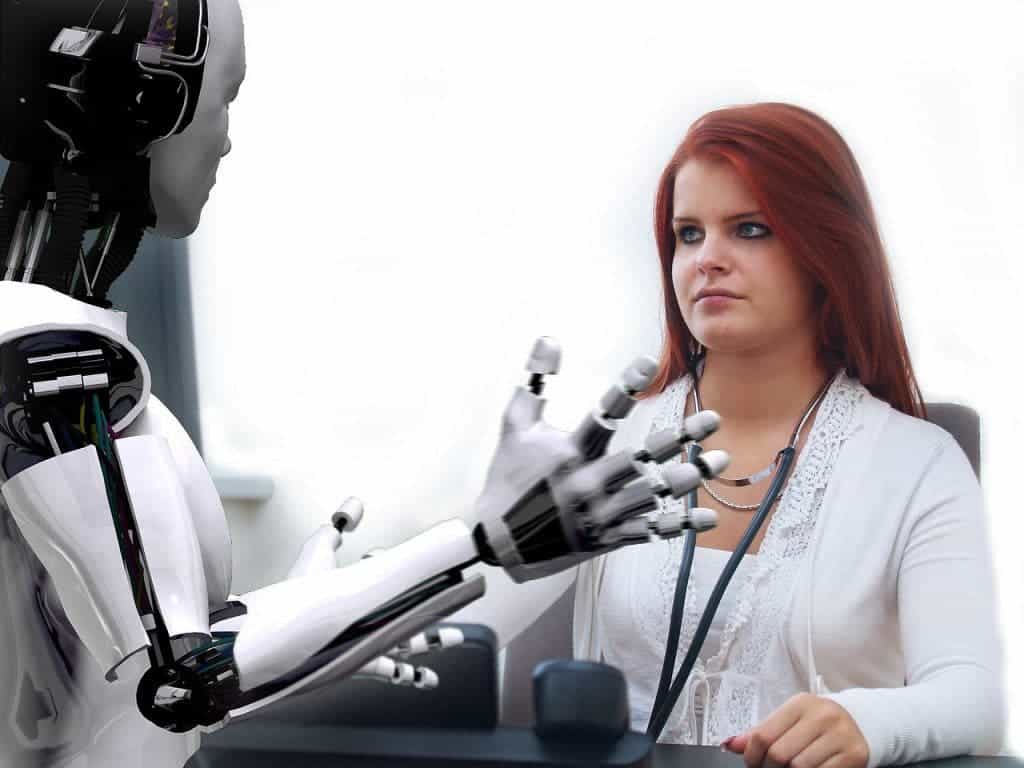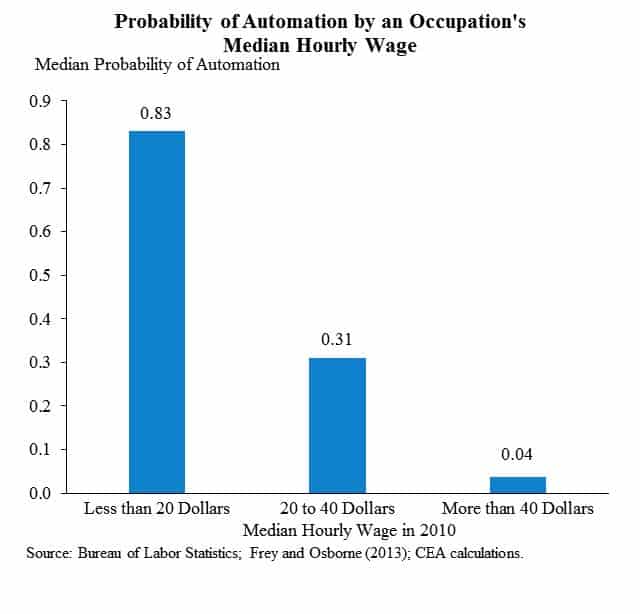It’s obvious that automation will replace a lot of jobs in the coming decades, especially the low paying ones. A new report made at the White House assessed the likelihood of robots taking over jobs and broke it down by hourly wage.

The annual economic report addressed to the President suggests there’s an 83% chance automation will replace workers who earn 20$/hour or less; 31% for those that fall between $20 and $40; and 4% for hourly wages above $40 an hour.
The findings echo those made by other researchers which suggest half of all U.S. jobs will be replaced by robots soon. Another study previously featured on ZME Science, found up to 87% of jobs in Accommodation & Food Services are at risk of automation, and even in some relatively skilled industries, such as Finance and Insurance, up to 54% of jobs could be displaced over the next decade or two.
Traditionally, innovation funnels more jobs and prosperity, although the paradigm shift meas obsolete jobs are superseded. The industrial age is a worthy example. Millions of jobs were displaced then in a myriad of fields by factories. The introduction of fast-paced and efficient assembly lines at the turn of the last century produced a new displacement. Massive globalization starting a few decades ago also caused millions of jobs in developed countries to be lost at the hand of outsourced cheap-labor in developing countries, mostly from Asia.
[MORE] A Chinese factory replaced 90% of its employees with robots – production soared soon after
This time around, the pace of innovation and automation across all fields is unheard of. It’s very likely that many people will not have the resources to repurpose their skill sets. Even if millions of cashiers, for instance, would train to become engineers or doctors, there would not be enough room in the job market for them. We seem to be nearing a cusp, and the solution doesn’t seem obvious at this point.
Automating all these jobs means that products and services will become cheaper. In effect, automation should strengthen the economy, but only if the income people have today isn’t displaced in corporate profits and dividends at the hand of a few. For now, the only solution in 2050 to solve the foreseeable job crisis might be to implement a basic income. Some countries like Holland and Finland are experimenting with this scheme which says every citizen is given a monthly stipend that covers all the basic necessities of life with no strings attached.
- Less than 2%: Physicians, surgeons, teachers, therapists, curators, anthropologists, archaeologists, pharmacists, engineers, material scientists, soil and plant scientists, biologists, chief executives.
- Between 2% and 5%: Orthodontists, photographers, health and safety engineers, lawyers, craft artists, veterinarians, writers and authors, astronomers, architects, mathematicians, editors, political scientists.
- Between 5% and 20%: Travel guides, financial managers, graphic designers, police patrols, travel agents, physicists, chefs, urban planners, firefighters.
- Over 98%: telemarketers (actually the biggest chance at 99%), hand sewers, abstract searchers, watch repairers, new account clerks, tax preparers, order clerks, loan officers, legal secretaries, radio operators, tellers, procurement clerks, referees, bookkeeping and auditing clerks.
- Between 95% and 98%: Hotel and restaurant hostesses, cashiers, real estate brokers, polishing workers, dental technicians, pesticide sprayers, telephone operators, cooks (not chefs), rock splitters, gaming dealers, mapping technicians, bill and account collectors.
- Between 80% and 95%: Cement masons, budget analysts, tax examiners and collectors, butchers and meat cutters, retail salespersons, geological and petroleum technicians, traffic technicians, roofers, gaming and sports book runners, riggers, furnace operators, parking lot attendants, floor sanders, correspondence clerks, power plant operators, marine oilers, brickmasons, medical secretaries.



